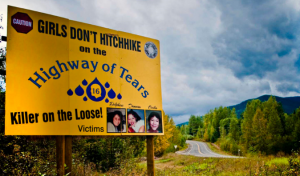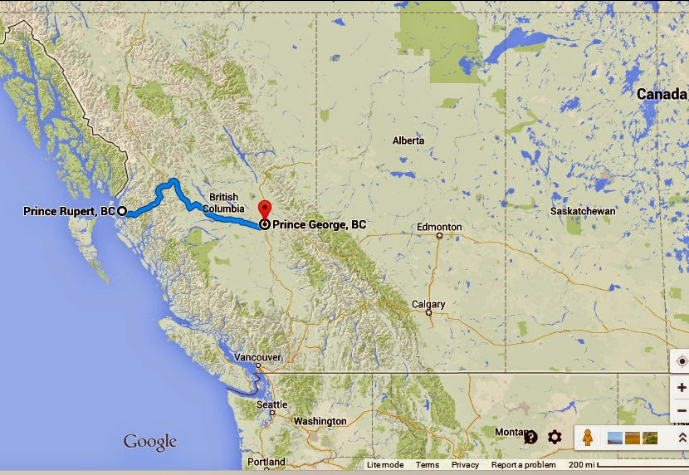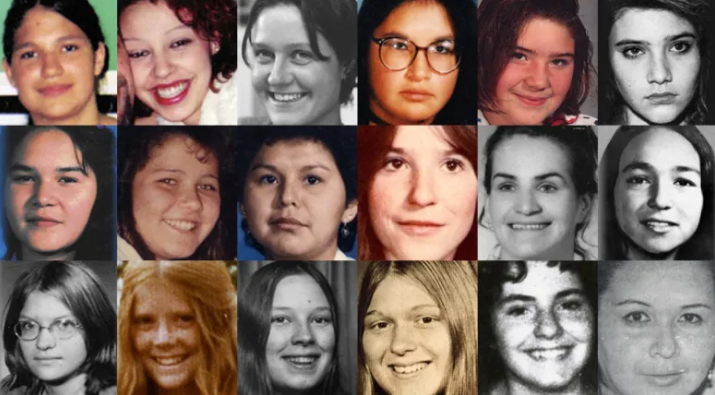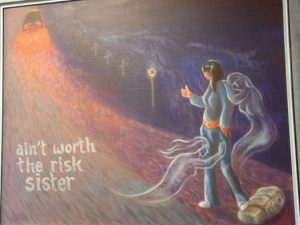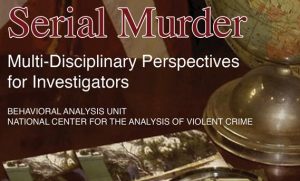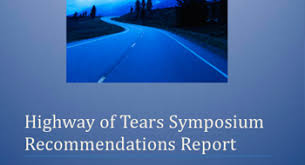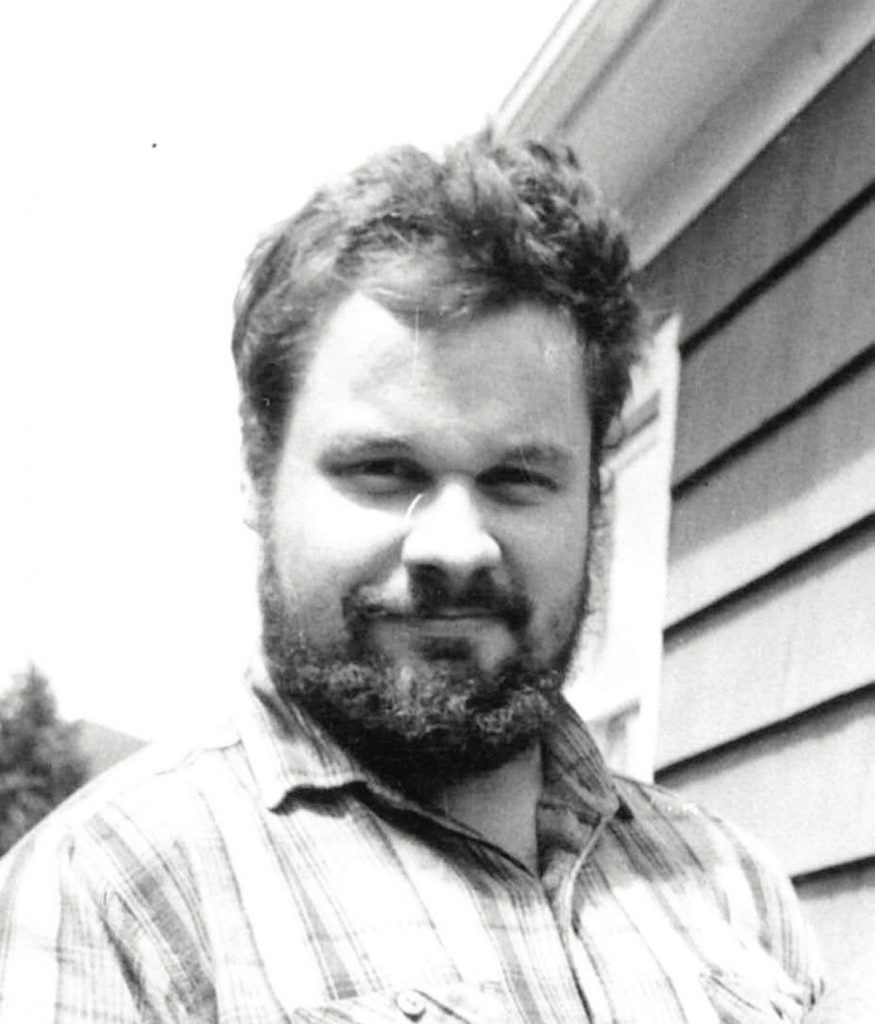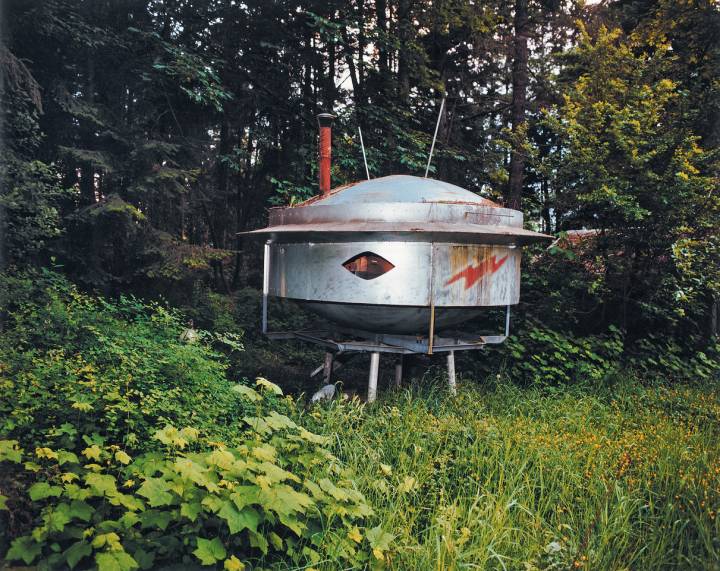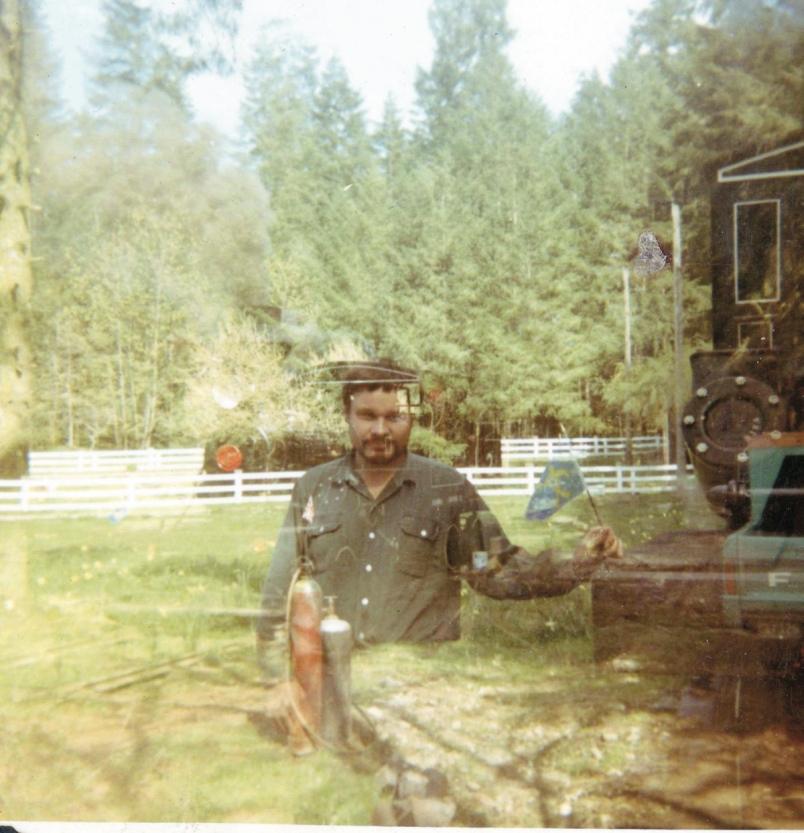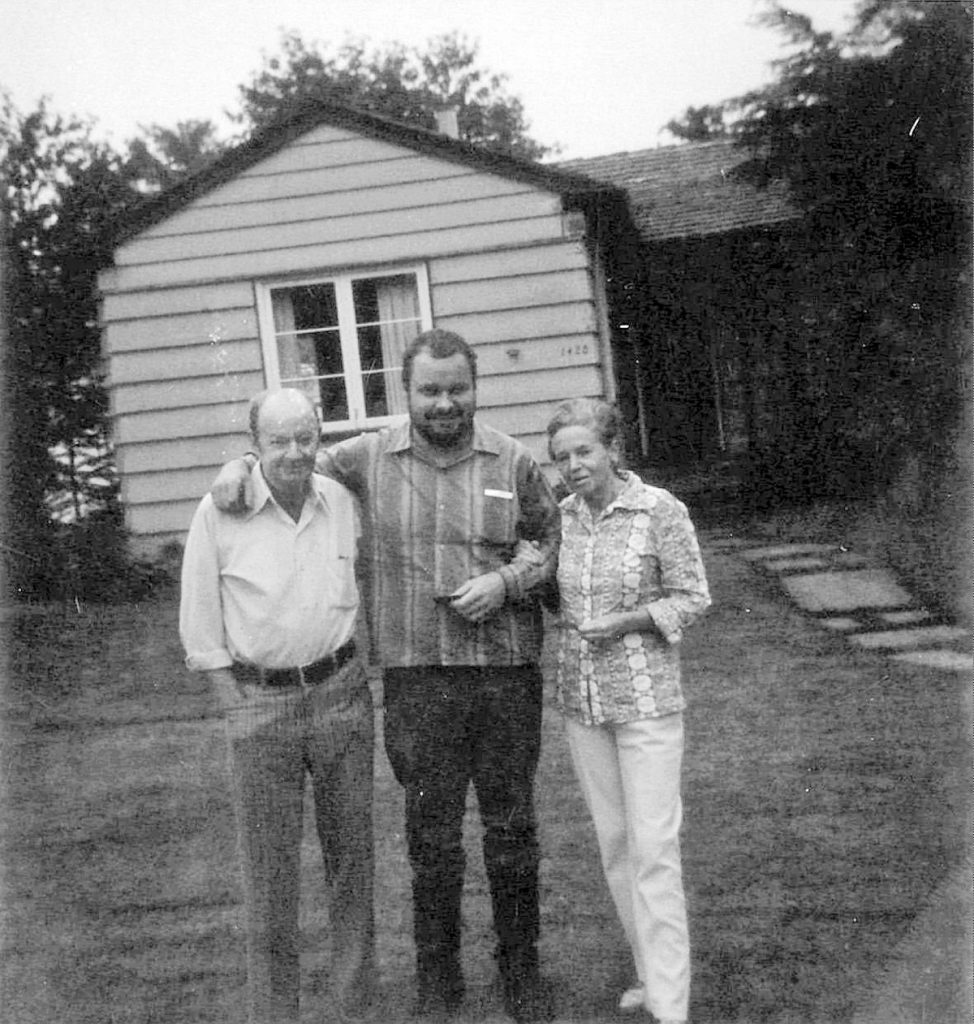*Note* I originally wrote this piece for the 2018 CBC Short Story Contest.
It called to me—the Old Stone Butter Church. It’ll call to you, too… if you’re ready.
 The Old Stone Butter Church called from a rise, where it stands on Comiaken Hill keeping forlorn watch over Canada’s Cowichan River estuary and traditional lands of the Khowutzun First Nations People on British Columbia’s southern Vancouver Island. It’s stood fifteen decades—the Old Stone Butter Church—and it’s built to withstand fifteen more.
The Old Stone Butter Church called from a rise, where it stands on Comiaken Hill keeping forlorn watch over Canada’s Cowichan River estuary and traditional lands of the Khowutzun First Nations People on British Columbia’s southern Vancouver Island. It’s stood fifteen decades—the Old Stone Butter Church—and it’s built to withstand fifteen more.
They handcrafted the Old Stone Butter Church with local basalt and sandstone—they being Khowutzun workers and Christian settlers paid with churned butter from the priest’s dairy herd. A half-pound of butter for a day’s laying stone. Fair trade, you could say, for those confirmed in Catholic faith and those cautiously caring their indigenous values.
It called to me on a November day when Quamichan winds blew plate-sized, golden maple leaves from soaking-wet branches, and browned evergreen needles fell from hulking firs mixed with over-protective cedars. I parked at the hill’s base along Tzouhalem Road. Step by slippery step over leaf-covered moss, I ascended the flagstone pathway, unsurely gripping the iron pipe handrail and passing a gauntlet of tree-bark faces independently judging my passage.
The Old Stone Butter Church loomed above, silhouetting what’s left of its classic cruciform architecture—masonry walls with embedded buttresses and a high-pitch, split-shake roof matching the backdrop of a gray fall sky. Its tired facade of vacant gothic window frames and a long-gone wooden front door gave a sad look compared to what was a once-thriving, nineteenth-century pretense happily beckoning parishioners within.
Outside, overgrowth of green salal and red salmonberry elbowed the church’s rock structure, inviting that sacred place back within the fold of nature’s harmony. Beyond the church, in a grassy field, a lone concrete cross marked the resting space of an elder in eternity, amid a grazing flock of wet, woolly sheep. And overhead, a ruling osprey screeched, outshouting the mass of raven and crow disciples perched below.
I stopped at the open doorway. It still called—the Old Stone Butter Church. Now louder… and longer… with its clear and definite message.
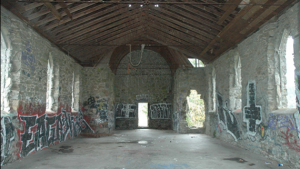 Shifting foot to foot, I surveyed the open vestibule and peered through cold, lonely dampness beyond the rotting jack arch that once welcomed worshipers to the warmth within. What is it? A move forth. What does the church want of me? With short and calculated steps, I crossed the narthex threshold and passed between the light and the dark.
Shifting foot to foot, I surveyed the open vestibule and peered through cold, lonely dampness beyond the rotting jack arch that once welcomed worshipers to the warmth within. What is it? A move forth. What does the church want of me? With short and calculated steps, I crossed the narthex threshold and passed between the light and the dark.
I shivered, yet sweated. My sixty-year-old eyes adjusted to the dim, and they scanned the nave where bench rows once sat a gathered assembly under the pious approval of a scissor-vault ceiling. The floor—it was solid—like some form of mixed concrete pressed from the earth and emitting a gaseous odor not like old eggs but more as old soul.
 Daylight shafted through openings that stained glass once filled and an oak door once barred. In ethereal twilight, I saw how a generation of vandals desecrated the old church making mockery of its teachings through graffiti sprayed in yellow and blue and red and black-upon-white with two offensive letters acting as parentheses enclosing the hallowed entrance—one a block-lettered “S” topped with a circular halo, the other a “B” crowned by devil horns.
Daylight shafted through openings that stained glass once filled and an oak door once barred. In ethereal twilight, I saw how a generation of vandals desecrated the old church making mockery of its teachings through graffiti sprayed in yellow and blue and red and black-upon-white with two offensive letters acting as parentheses enclosing the hallowed entrance—one a block-lettered “S” topped with a circular halo, the other a “B” crowned by devil horns.
I turned, facing the crossing leading to the apse and the altar. More graffiti defaced this sanctuary and some brute force had ripped rocks from the transcept, callously throwing them about with no regard for the past and what this sacristy symbolized.
I hear it shut—the vestibule door. It wasn’t a shove. Certainly not a slam. It was a solid and securing sound coinciding with a reassuring temperature change where the chill subsided as the light manifested from dismal dim to calming clarity. I looked back, and I watched as the circular window space above the now-present, paneled oak door turned from a clearing sky to a marvelous consecrational cross consumed with an enlightened rose-colored glow.
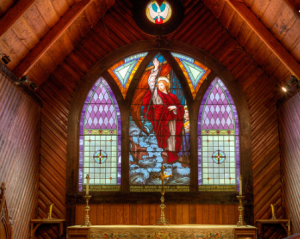 To my right and to my left, the gothic arches morphed into leaded stained glass windows of sun-filtered images showing Christian stories from Testaments new and old. Around me, the pews transformed, becoming clear-grained fir boards waxed to a shine with their backs holding leather-bound books filled with good words. Below, the gritty floor transpired into turquoise and lavender and emerald mosaics telling their version of millennia’s history.
To my right and to my left, the gothic arches morphed into leaded stained glass windows of sun-filtered images showing Christian stories from Testaments new and old. Around me, the pews transformed, becoming clear-grained fir boards waxed to a shine with their backs holding leather-bound books filled with good words. Below, the gritty floor transpired into turquoise and lavender and emerald mosaics telling their version of millennia’s history.
And ahead, a crucifix appeared beyond the crossing, before the chancel, mounted on the east wall above the now-formed, maple-wood pulpit draped in a ruby cloth with virginal white braids. Radiant light illuminated the old rugged cross from the cedar-paneled barrel vault—the full-sized cross supporting an exquisite supernatural figure cruelly spiked through the wrists and ankles—His face a balanced chastity of agony and ecstasy, perfectly representing the sins of the incarnate here on earth and the resurrected world of salvation far beyond our prison of mortal comprehension.
“Friend, it’s good to see you. It’s nice to know you care.”
The voice was around me. Not over, not under, not behind, nor ahead. It was everywhere within and without me. It was not male. It was not female. The best I can describe—a neutral voice with the feminine intelligence and majestic confidence of Meryl Streep and the beautiful baritone authority of Morgan Freeman. It was the voice of the Old Stone Butter Church.
“You… you called…” Humbly, I responded. I wasn’t scared nor alarmed. Not surprised or astounded. It felt natural to accept and submit, realizing some profound life change was occurring—I was entering an epiphany—and I was duty-bound to listen. “Why? Why have you called?”
“Because you are ready.” The voice was matter-of-fact. Straight-to-the-point. Kind of like Spock.
“Ready for… what? I… I don’t understand.” Perplexity stifled my speech.
“When the student is ready, the teacher shall appear.” The church’s voice confidently quoted a proverb. “You are ready to accomplish a task for me. I’ve called to instruct you.”
 It was instinct to find the mouth—to look at the lips—that uttered my calling. I looked aside, viewing a black cast iron stove now convecting heat waves with the sensual smell of burning coal. Candle flickers accented gas lamps, allowing an ideal taste of comfort with glory. Only a parish remained to assemble, and this virtual reality of a bygone era would be consciously complete.
It was instinct to find the mouth—to look at the lips—that uttered my calling. I looked aside, viewing a black cast iron stove now convecting heat waves with the sensual smell of burning coal. Candle flickers accented gas lamps, allowing an ideal taste of comfort with glory. Only a parish remained to assemble, and this virtual reality of a bygone era would be consciously complete.
“How can… What can… I possibly do?”
“I need your help spreading a message.” The church was clear and concise, but firm. “To connect with people like yourself who are ready to receive the message. Several messages, actually, wrapped into one.”
“I… I… I’ll do what I can.”
 An apprehensive urge overwhelmed me. I’m not Catholic, not baptized or raised in the faith. And I’m not a practicing Christian, but I had an instant respect for this church’s voice. There was something here I’d missed in my life. Now, coming into a period of retirement and retrospection, it was time. Time to listen. Unconsciously, I knelt at the crossing—genuflecting, I’m told they call it—and I opened my mind.
An apprehensive urge overwhelmed me. I’m not Catholic, not baptized or raised in the faith. And I’m not a practicing Christian, but I had an instant respect for this church’s voice. There was something here I’d missed in my life. Now, coming into a period of retirement and retrospection, it was time. Time to listen. Unconsciously, I knelt at the crossing—genuflecting, I’m told they call it—and I opened my mind.
“I’ll outline my message…” The church paused, as if reflecting upon itself. “First, a bit of my background… how I came to present the physical state you walked to… how I lost tangible dignity but retained the inner strength and self-respect you see now.”
I stood, turning about and taking in a marvelous blend of tradition, order and décor. How something, someone, of such splendor could be so maliciously neglected seemed incomprehensible. And, how a bastion of civilization like a carefully crafted church could miraculously survive, despite infernal attempts to destroy it. Clearly, there was an answer in the message I was about to pass on.
“I had ten years of good run.” The church mused. “My builders were mixed. Local native people and immigrant Europeans. It’s much like how the country, the continent, was civilized… if you choose to use that term. But, like all organizations, there has to be mutual respect for every culture, faith, and belief involved. That’s a grounded principle in every society, regardless if Christian based, traditional native, or any type of religion based on history, doctrine and decent human principles. That didn’t happen with me, now called the Old Stone Butter Church.”
I detected emotion. The voice reminisced as if struggling to resolve the past and conform to, yet help shape the present and future. I listened.
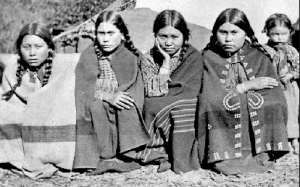 “My decline began with a culture clash. Mistrust and suspicion. As you saw, my crafters had considerable skills and built my structure soundly with what they had. Rock. Wood. Mortar. They appointed me with handsome glass and hand-wrought iron. They built me as they saw fit, according to one-sided specifications. That was the Christian spectral view. Not the vision of spirituality from the Khowutzun people who have their own teachings to be respected.”
“My decline began with a culture clash. Mistrust and suspicion. As you saw, my crafters had considerable skills and built my structure soundly with what they had. Rock. Wood. Mortar. They appointed me with handsome glass and hand-wrought iron. They built me as they saw fit, according to one-sided specifications. That was the Christian spectral view. Not the vision of spirituality from the Khowutzun people who have their own teachings to be respected.”
“What happened?” I was enthralled. “How did you fall into such shamble?”
“After ten years, the division between Caucasian settlers and indigenous landowners became unbearably stressed. Intolerance, by some in my Christian congregation, of native beliefs and values… not all by any means… forced my aboriginal followers to evict the parish from their lands. Oh, there were falsehoods spread of me being haunted and possessed by dark forces, but the reason… the truth… remains as often is… cultures are ignorantly disrespectful of each other despite a clear interconnectedness, and universal value, of all humanity.”
“And?”
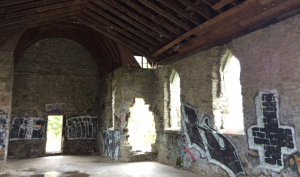 “They stripped me of possessions… leaving me to stand bare… a witness to the world of religious strife and the resilience to represent truth for those wishing to find it. They… the Christian parishioners… took my stained glass windows, my oak doors, my pews, my altar, and my beloved crucifix away to a new location on non-native land and erected a new church to represent their clique. I remained empty… the Old Stone Butter Church… a vulnerable victim to vandals.”
“They stripped me of possessions… leaving me to stand bare… a witness to the world of religious strife and the resilience to represent truth for those wishing to find it. They… the Christian parishioners… took my stained glass windows, my oak doors, my pews, my altar, and my beloved crucifix away to a new location on non-native land and erected a new church to represent their clique. I remained empty… the Old Stone Butter Church… a vulnerable victim to vandals.”
“This is a shameful story.” I felt a throat lump, a sense of pity, yet profound curiosity. What do you want me to do?
“But, they didn’t take my spirit…
“…no…”
“… and you’re wondering what I want you to do. I need to confide before revealing my message. There is nothing holy about me. I’m just a human-built old rubble block, but I’m symbolic of a timeless truth. You don’t need me as a physical building to worship in or pray to. You can do that anywhere, and that’s what today’s masses are discovering… what they’re seeking. But most haven’t received the message, yet they’re ready. Many describe themselves as ‘Nones’. That being they don’t subscribe to any set religion.”
“Yes.”
“These are the ones I want to reach. It’s not that they’re atheist or agnostic, and they’re not so indoctrinated in religious dogma that they can’t be reached. No. Most Nones are too busy with life’s concerns to stop and reflect on what’s really important… what the core truth is in mortal existence and how I… an old relic… can help them ground.”
“I follow your past. And think I understand where you’re going.” I stayed fast, waiting for revelation. “But why call on me?”
“Because you are one of the most powerful people in society. Your kind has always been the most influential. The most persuasive force.”
“What? How am I powerful? I’m not an emperor, a politician… business tycoon. And I’m by no means an entertainment or religious icon.”
“Remind me of what you do for a living.”
“I’m… I’m a writer. I write books. Articles. Web pages. Do op-eds for the HuffPost. Like, whatever pays the bills.”
 “Precisely. You’re a scribe. Scribes have always been the most powerful force in humanity. Emperors? Politicians? Tycoons? And religious icons and pop-entertainers? They come and they go and they’re at the mercy of scribes. They beg scribes for exposure… favorable, if they can get it. Otherwise, they fall at the scribes’ peril. Not at a foe’s sword but at a scribe’s quill.”
“Precisely. You’re a scribe. Scribes have always been the most powerful force in humanity. Emperors? Politicians? Tycoons? And religious icons and pop-entertainers? They come and they go and they’re at the mercy of scribes. They beg scribes for exposure… favorable, if they can get it. Otherwise, they fall at the scribes’ peril. Not at a foe’s sword but at a scribe’s quill.”
“You want me to write for you?” I wasn’t sure. “I am… honored… privileged… what is your message… how do you want my approach?”
“Getting my word out has never been easier. But…” The church calculated. “Telling it properly is the challenge. Today, you, the scribe, have unlimited access to the masses. You have your blog and website. You have social media platforms. You have connections with mainstream media you’ve built through years of credibility as a respected scribe. People will listen to you. If you present my message in a way they understand, it will help them function in the world as productive and contributing society members. And they will spread it through word of mouth… rather, today, word of mouse.“
“Word-of-mouse…”
“It starts with something being in it for them… especially the vulnerable Nones who have limited grounding or conviction in conventional spiritual health and worship-prescribed happiness.”
“What should I tell them?”
 “Start my message by reassuring people that no religion has a monopoly on truth. But, most of the world’s religions have universal core concepts in their doctrine. Your human nature… it’s the cyclical nature of the universe… like the Khowutzen people knew and taught. You move forward from birth to death, after which you go back where you came from. It’s what you do unto, with, and for others during your earthly life now that matters. Not stocking-up self-important spirituality for some later event. As a side note, the concepts of heaven and hell are what you make for yourself while you exist here in human form.”
“Start my message by reassuring people that no religion has a monopoly on truth. But, most of the world’s religions have universal core concepts in their doctrine. Your human nature… it’s the cyclical nature of the universe… like the Khowutzen people knew and taught. You move forward from birth to death, after which you go back where you came from. It’s what you do unto, with, and for others during your earthly life now that matters. Not stocking-up self-important spirituality for some later event. As a side note, the concepts of heaven and hell are what you make for yourself while you exist here in human form.”
I nodded. There was no need for note taking.
“There is no limit to your human potential, but there is a limit to the time you have in your ethereal lifespan. It’s incumbent for you to use your precious time as wisely as you can. That means enlightening… knowing… your internal world of health and welfare so you can help others to help themselves. That’s my core message… it’s your purpose. Know yourself and be healthy in yourself. Then help others to help themselves. Build your placid world not with vain material assets… ultimately, build your internal peace with placid external relationships. Doing so… you make yourself and others… happy. And you don’t need a church for that.”
The church said no more. I heard what was in it for the Nones and the Scribes. It was now time to go.
Its candles and lamps extinguished. Its coal stove went out. Its stained glass turned back to open sky, and its oak front door released. Its pews were gone as was its crucifix holding the representation of human divinity. And its smell… the smell of old soul… returned.
 I left the Old Stone Butter Church with a purpose—a purpose I suppose was there all along. I’ve new-found happiness and reinvigorated spiritual health. My mission is sharing the message with those receptive to hearing timeless truth. Now, I’m at my keyboard with the power of the internet—billions of interconnected souls potentially at my reach—and I start by scribing these words:
I left the Old Stone Butter Church with a purpose—a purpose I suppose was there all along. I’ve new-found happiness and reinvigorated spiritual health. My mission is sharing the message with those receptive to hearing timeless truth. Now, I’m at my keyboard with the power of the internet—billions of interconnected souls potentially at my reach—and I start by scribing these words:



